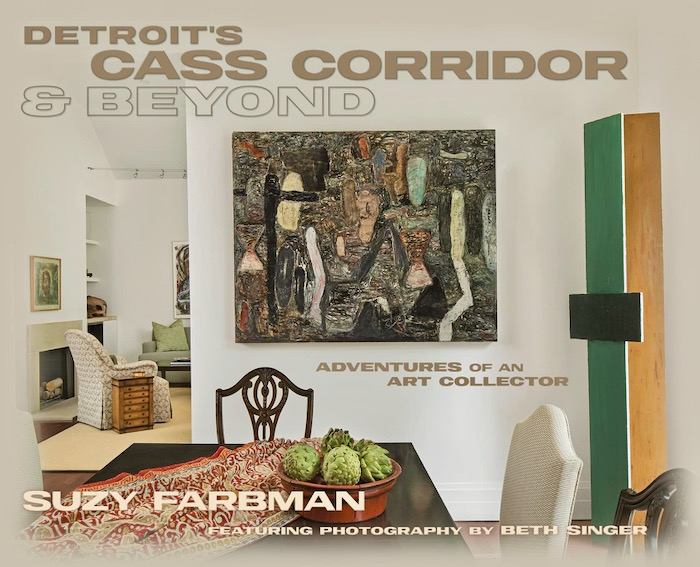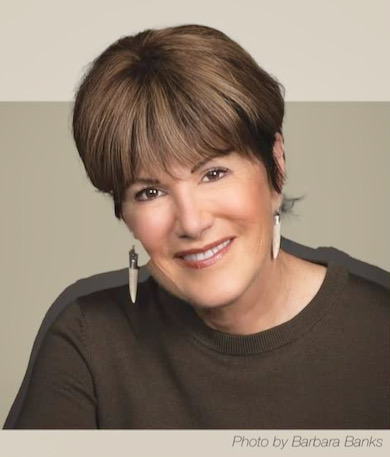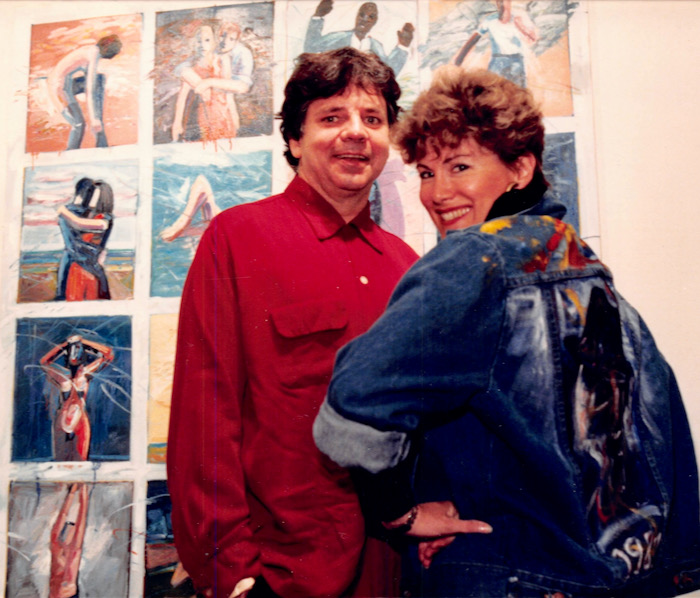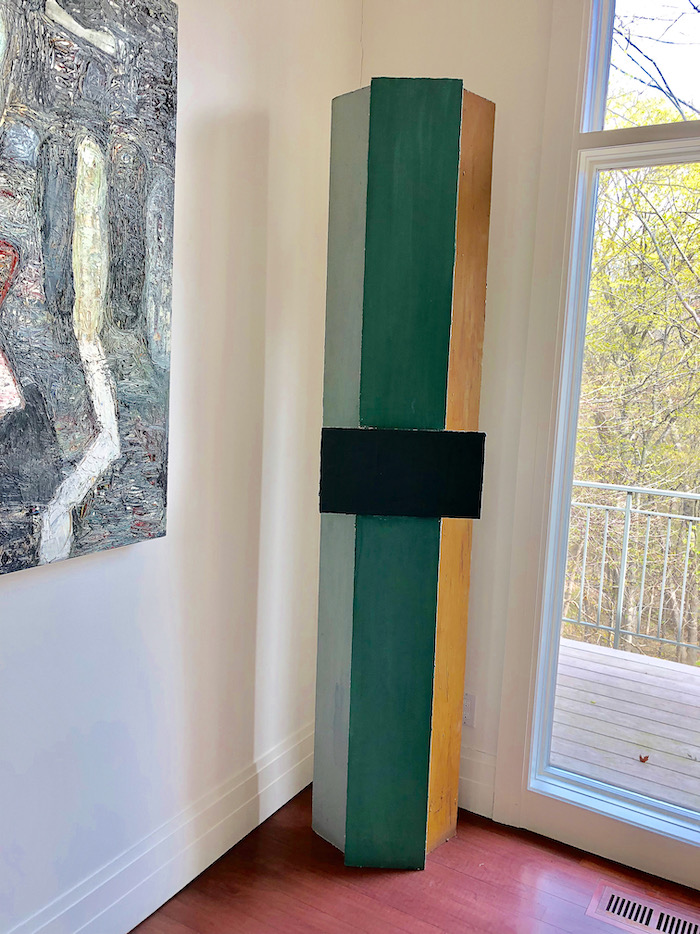
Click on the cover to visit the book’s Amazon page. ABOUT THE COVER: Dining room of our Franklin home. Brenda Goodman, Untitled, oil on canvas, 1985, from the Edward Thorp Gallery, NY. Ellen Phelan, Untitled standing cross, 1976-77, oil on plywood, from the Susanne Hilberry Gallery.
‘How we welcomed Detroit’s first avant-garde art movement into our home’
 I thought about calling this book Love Stories for the Angels of Detroit. The phrase comes from a collaboration between poet John Yau and painter Archie Rand referenced in the text. Art appreciation has been a love affair for me. And my life has been blessed with many angels.
I thought about calling this book Love Stories for the Angels of Detroit. The phrase comes from a collaboration between poet John Yau and painter Archie Rand referenced in the text. Art appreciation has been a love affair for me. And my life has been blessed with many angels.
This book was dreamt up—literally—by some personal angels. Well into the coronavirus pandemic, I’d been quarantined for months. With my husband’s brain surgery and resulting stroke and my history as a stage IV cancer survivor now deemed—cough, cough—elderly, we were both high risk. On a Zoom call, girlfriends Brenda Rosenberg, Peggy Daitch and Sandy Seligman perceived my lackluster condition. The four of us had visited Paris in 2018, joyfully sipping champagne and nibbling foie gras. Joie had turned to blah.
My girlfriends knew writing was and is a lifeline for me. I’d written two books about previous crises: my earlier marriage problems and my later cancer diagnosis. The morning after our Zoom call, Brenda phoned. “I dreamt you wrote a coffee table book about your collection and your interest in the early Cass Corridor,” she said. “I want that book. I have a place for it on my coffee table.”
Brenda was right, I thought. I had a happier story to tell. With no end to the pandemic in sight, I had time to tell it. If Brenda had a place for such a book, and Sandy and Peggy were vying for the book launch party, who was I to deny them?
I hung up the phone and turned on my laptop.
There’ve been other angels as well. People who’ve shown up with encouragement that stirs me, support that keeps me going. My sister Anne’s a personal angel who volunteered to read this manuscript twice and drew smiley faces on parts she loved.
Another personal angel is Beth Singer, my friend and partner for five years with Better Homes & Gardens, etc. Beth shot most of the professional photos in this book several years ago, when our house looked pristine, before ramps and grab bars were installed. Recently, Beth returned to take several more photos, helped by her capable assistant Patrick Tunison. I’m grateful to them both for the main visuals in this book.
Lauren Holder, a Marketing Executive with Farbman Group, has been another angel. I’m about as tech savvy as a shoelace. Lauren has helped me convert photos to printable form, figure out graphics and been cheerful and generous with moral and technical support. As has Farbman Group’s tech wiz, Rodney Lange, who has helped me through innumerable technical glitches.
The professional photos come first; the candids later in the book. The latter are mostly from my iPhone, a few older ones reshot from paper prints I saved in albums. They don’t compare with the professional images but represent meaningful memories. Historically, I’ve taken pictures of friends and events. At Kingswood, I was photo editor of the “Woodwinds,” the school yearbook, my senior year. If I’d known this book was in my future, I’d have shot more photos all along. I’m grateful for those I did take.
Since I long ago accepted the truth of the adage about pictures versus words, the story of my collecting adventures follows the photos. Captions often provide fascinating insights beyond the aesthetic equivalent of name, rank and serial number—if I say so myself.
Other angels in this endeavor are Grace Serra, curator/coordinator of the Wayne State U. art collection and a chief cheerleader. Fayez Hammoud and Angela Askew, caregivers whose devoted and professional help with my husband has freed me up to focus on remembering and relating my art adventures. Rick Carmody, who shared some of the photos shown here, my interior designer and friend. Judie Koploy, a fine storyteller, cohort and cousin. And most of all Burton, who has generously and selflessly encouraged and supported all my writing efforts.
I appreciate the cheering me on of my family—sons David and Andy, daughters-in-law Nadine and Amy, grandchildren Hunter, River, Fischer, Beau, Alexis, Camryn and Lindsay. Their support and love have also kept me going during these challenging times. Thanks, too, to Michael, Roger, Barry, Curt, Artie, Danny, Jerry and Sandy and Sue, who check in often.
The Detroit art world has been blessed with angels, too. Jackie Feigenson and Mary Preston were angels who influenced collectors including me. They did everything they could, including giving up their own artistic practices, to boost the careers of other highly talented Detroit artists.
I’ve had other angels as well. If you’re among them, please know how grateful I am.
This book begins with photographs of our collection in Franklin. Additional images come from our home in Florida. There are also art related photos from trips I’ve taken and events I’ve attended.
They add up to a story of joy. The joy of collecting.
Though viewed as backwater, flyover country by connoisseurs on both coasts, Detroit has an art history worth respect. Many talented fine artists got started in the D. Some stayed and continued to produce exciting work. We’ve been blessed with top-notch galleries and dealers, knowledgeable art writers, first rate art schools, dedicated collectors and art advocates, an internationally renowned museum and, more recently, an exciting contemporary museum. Credit where credit’s due.
This book is a story of the art world I knew. An art world less destabilized by politics and political correctness. Not forced into months of seclusion by a deadly virus. A world where people felt comfortable in crowded galleries and museums. Where we relished squeezing together for the taking of a toast and tea.
This is the story of the Detroit I knew and wrote about, mostly in the 1970s and 80s, the art world I experienced, the joy I had in collecting.
And here again is a link to Detroit’s Cass Corridor and Beyond on Amazon.
Care to see a few of the images?

Historic photo of early Cass Corridor members. L to R: Bradley Jones, Ellen Phelan, Ron Winokur, Nancy Mitchnick, Doug James. Artwork: On wall at left by Ellen Phelan; construction (foreground) by John Egner; Flower painting on wall by Nancy Mitchnick.




